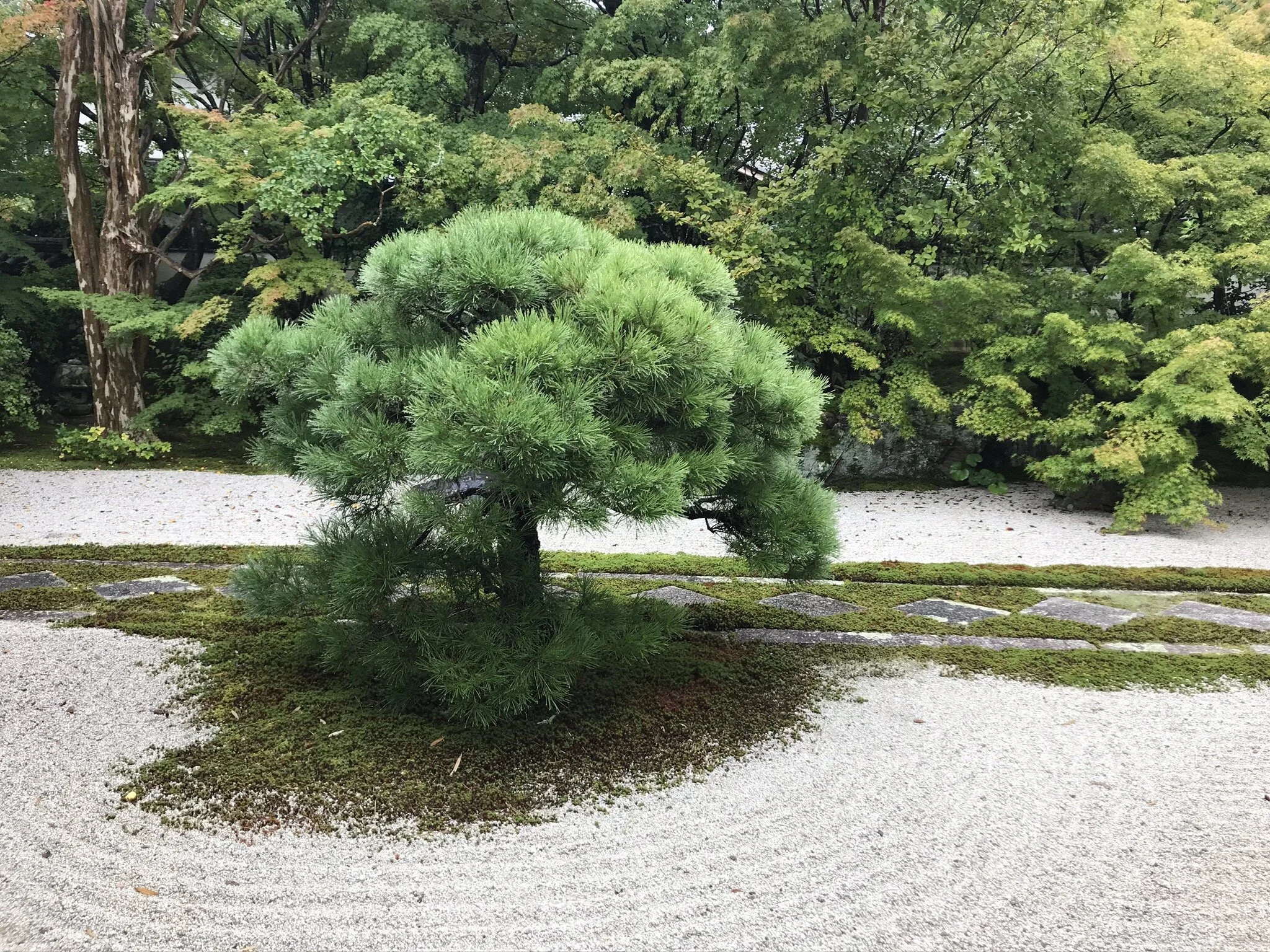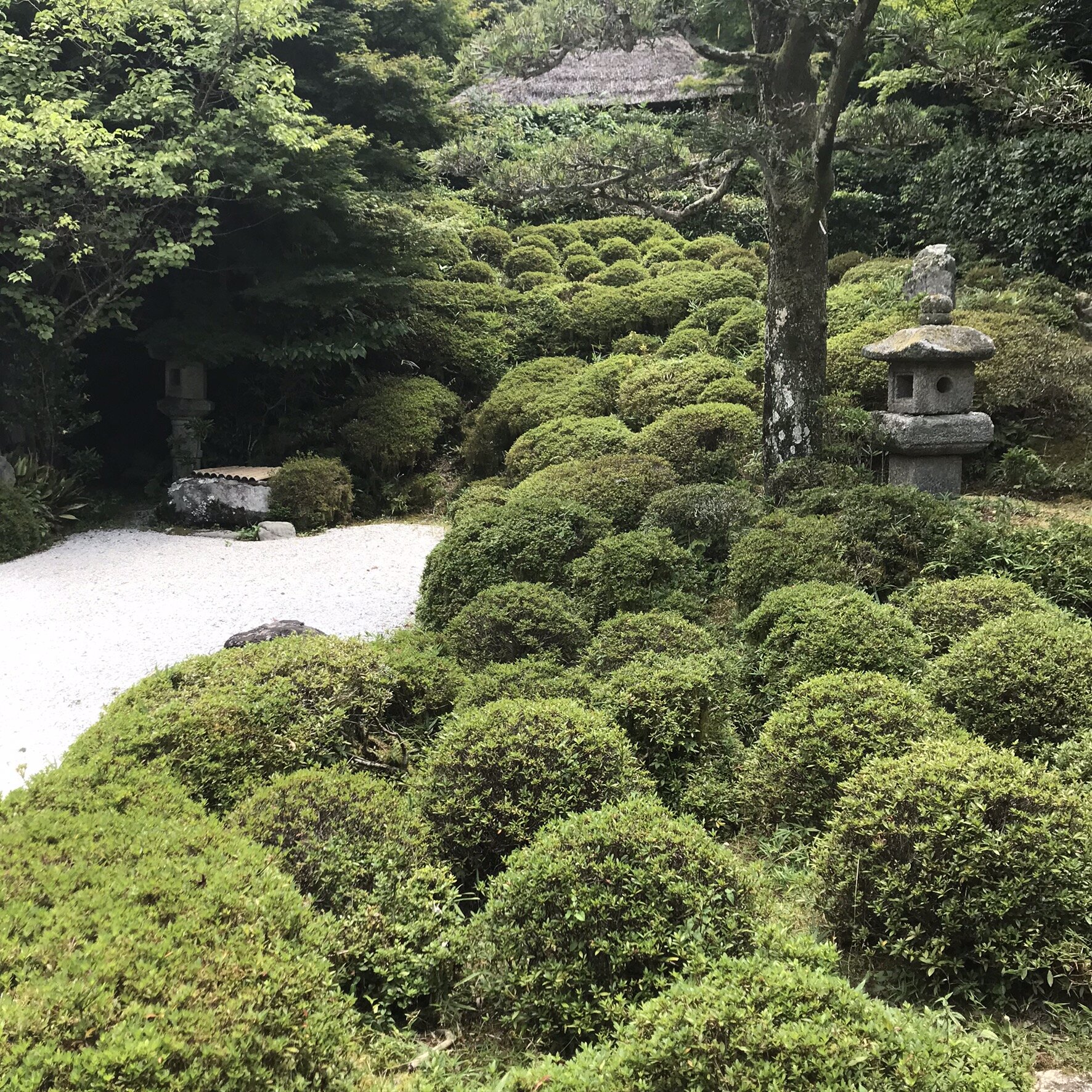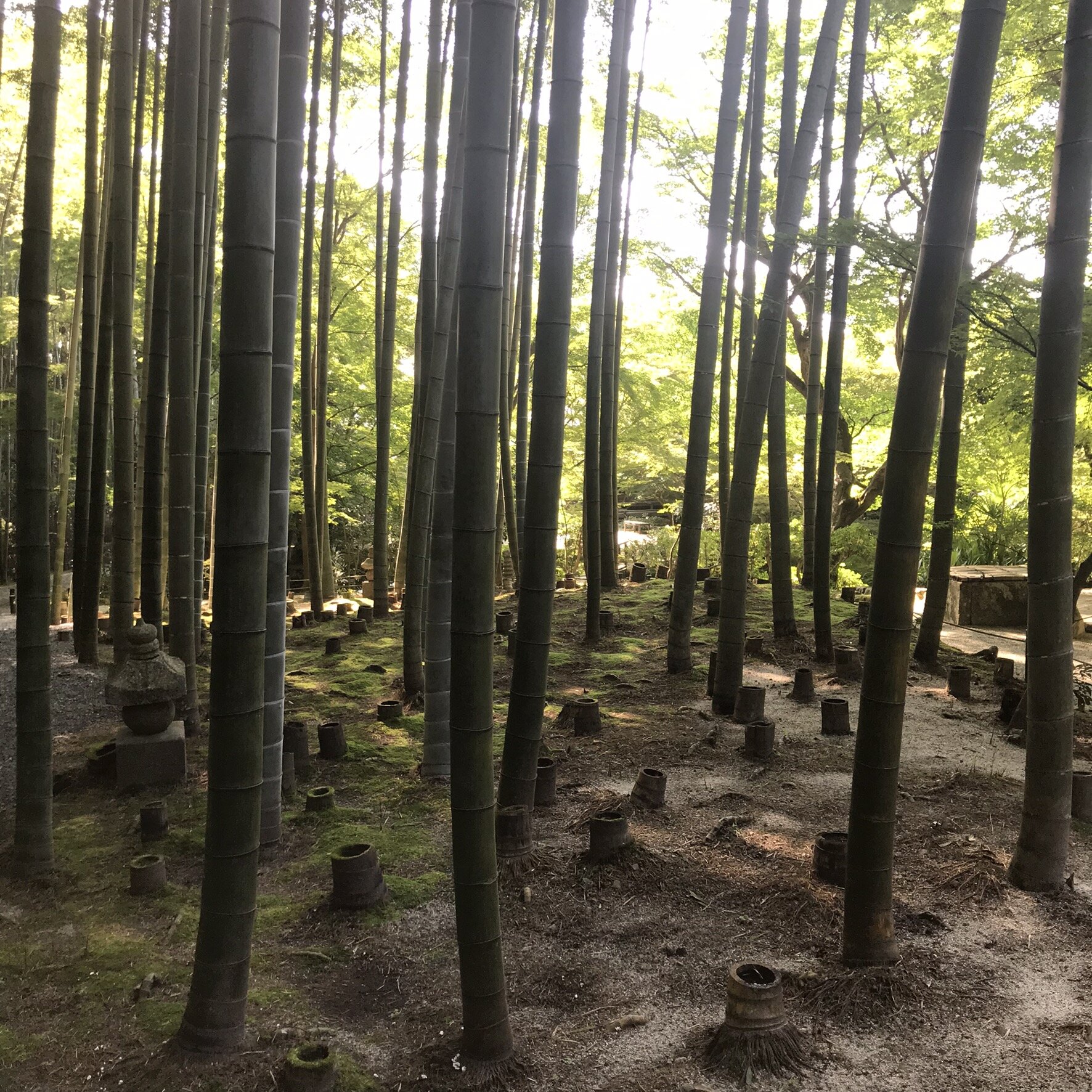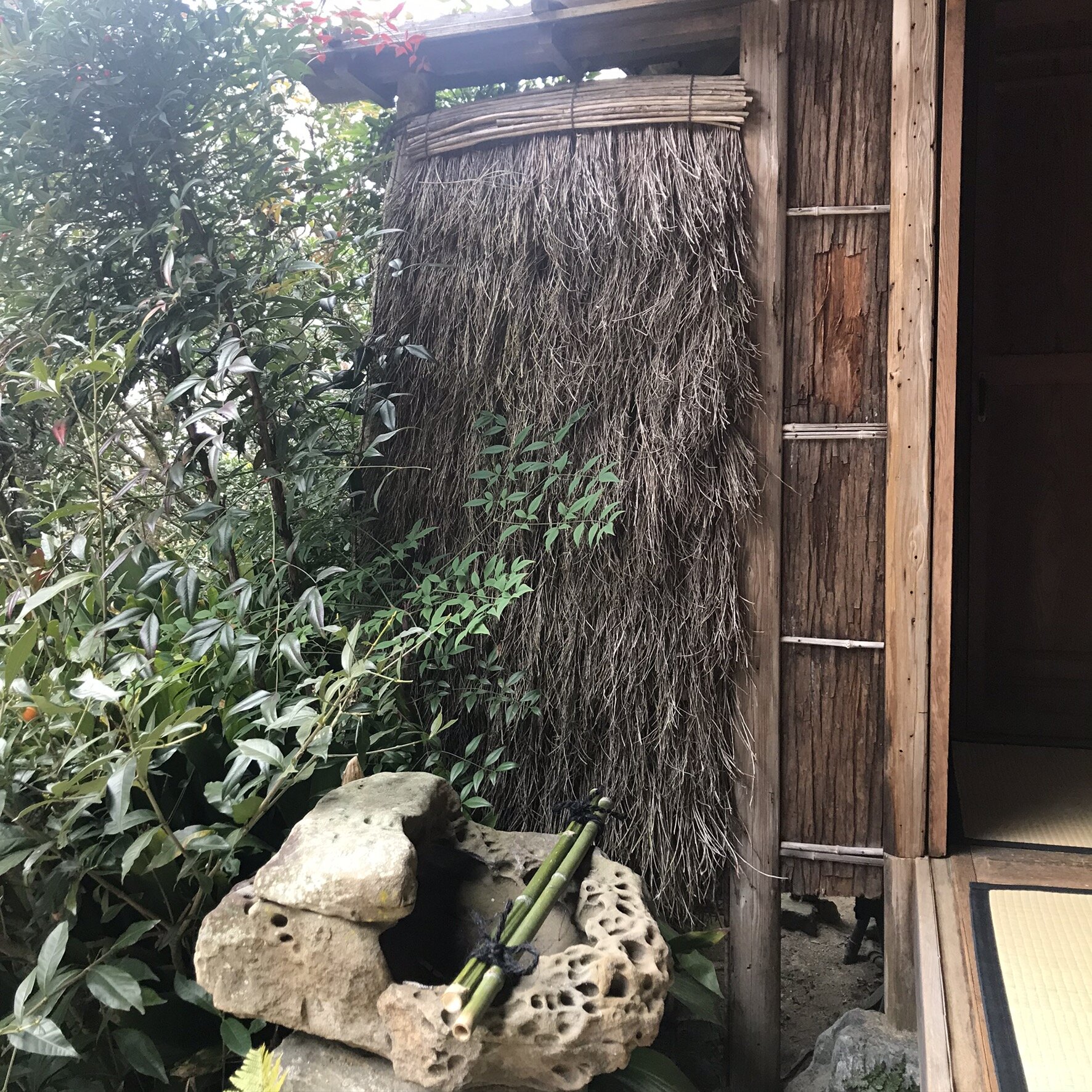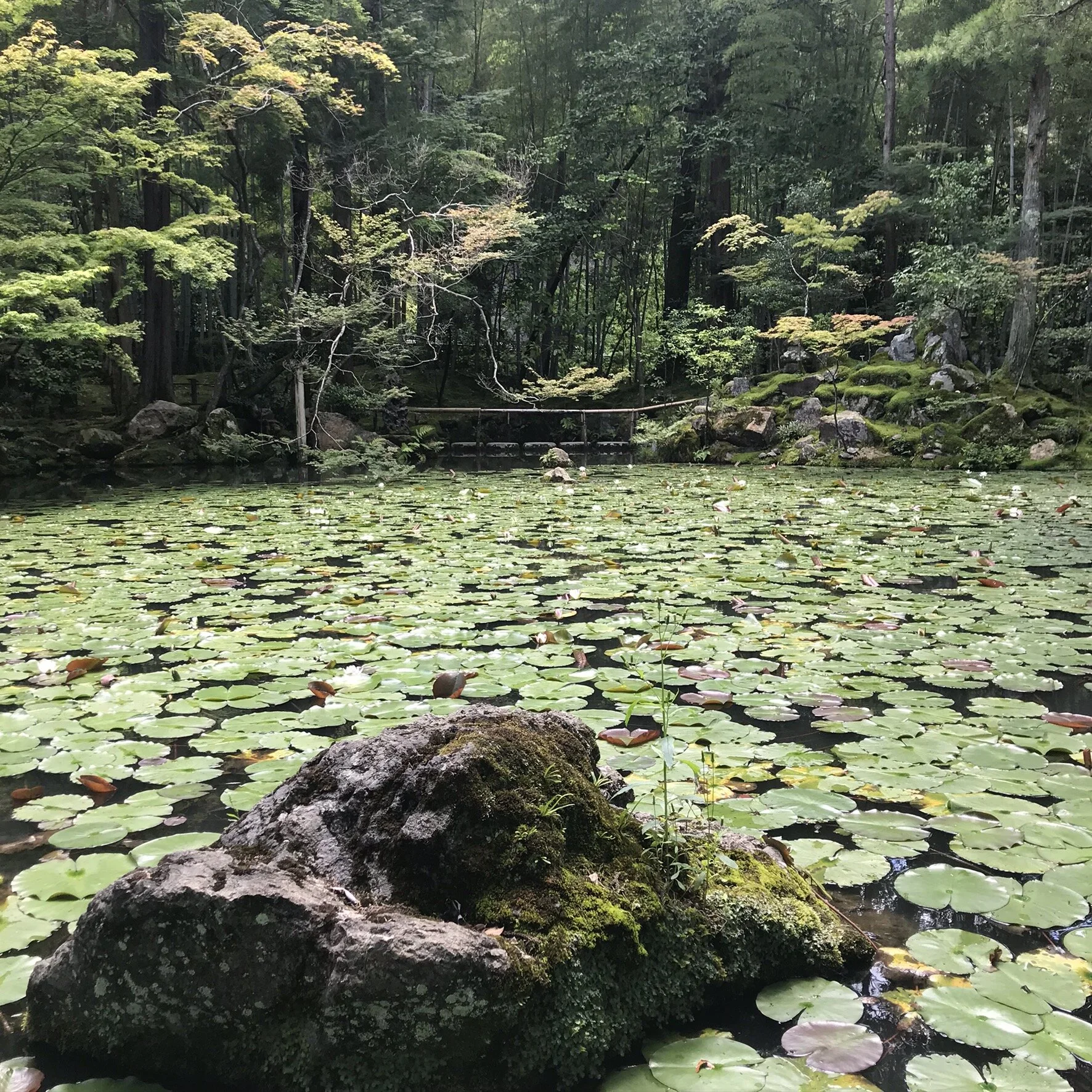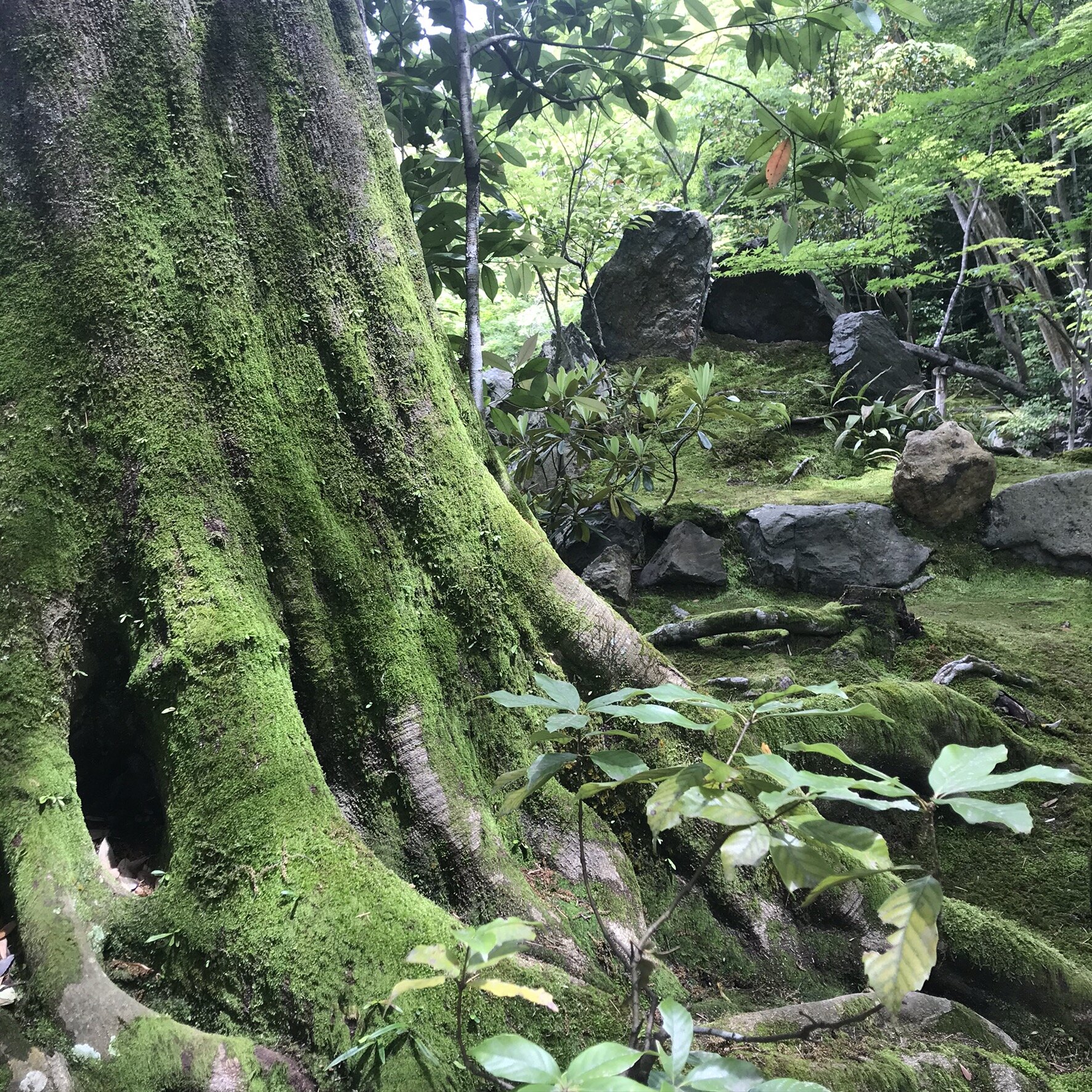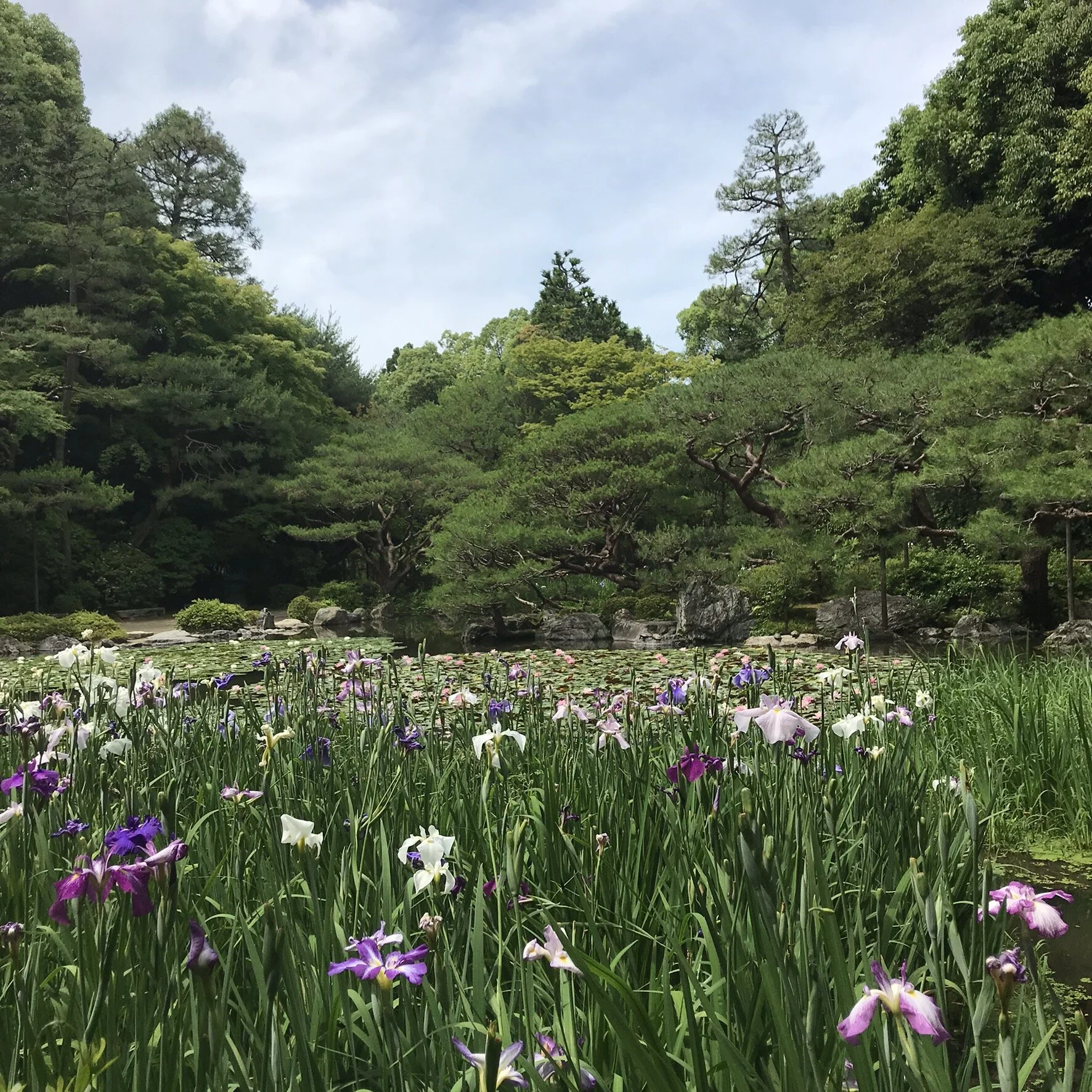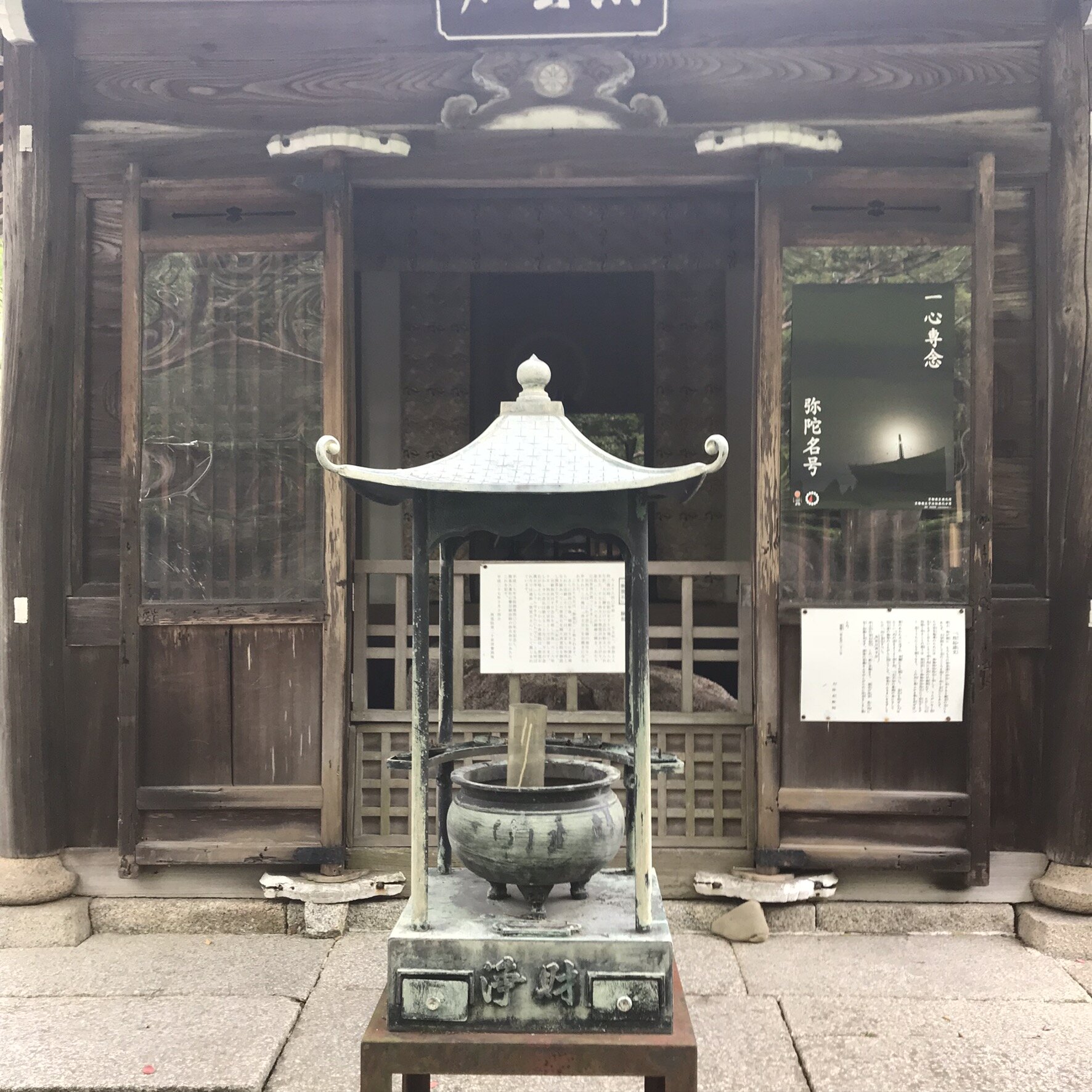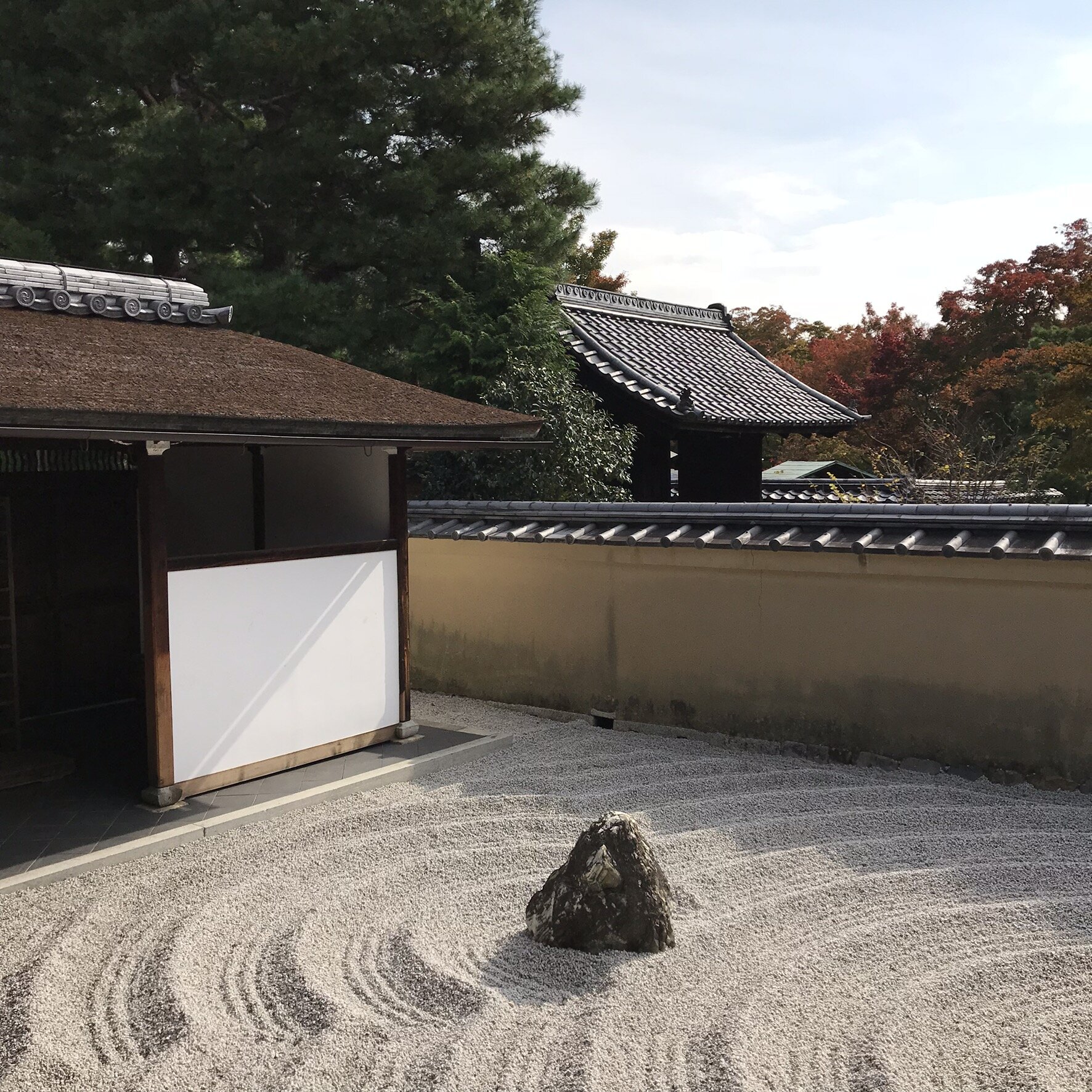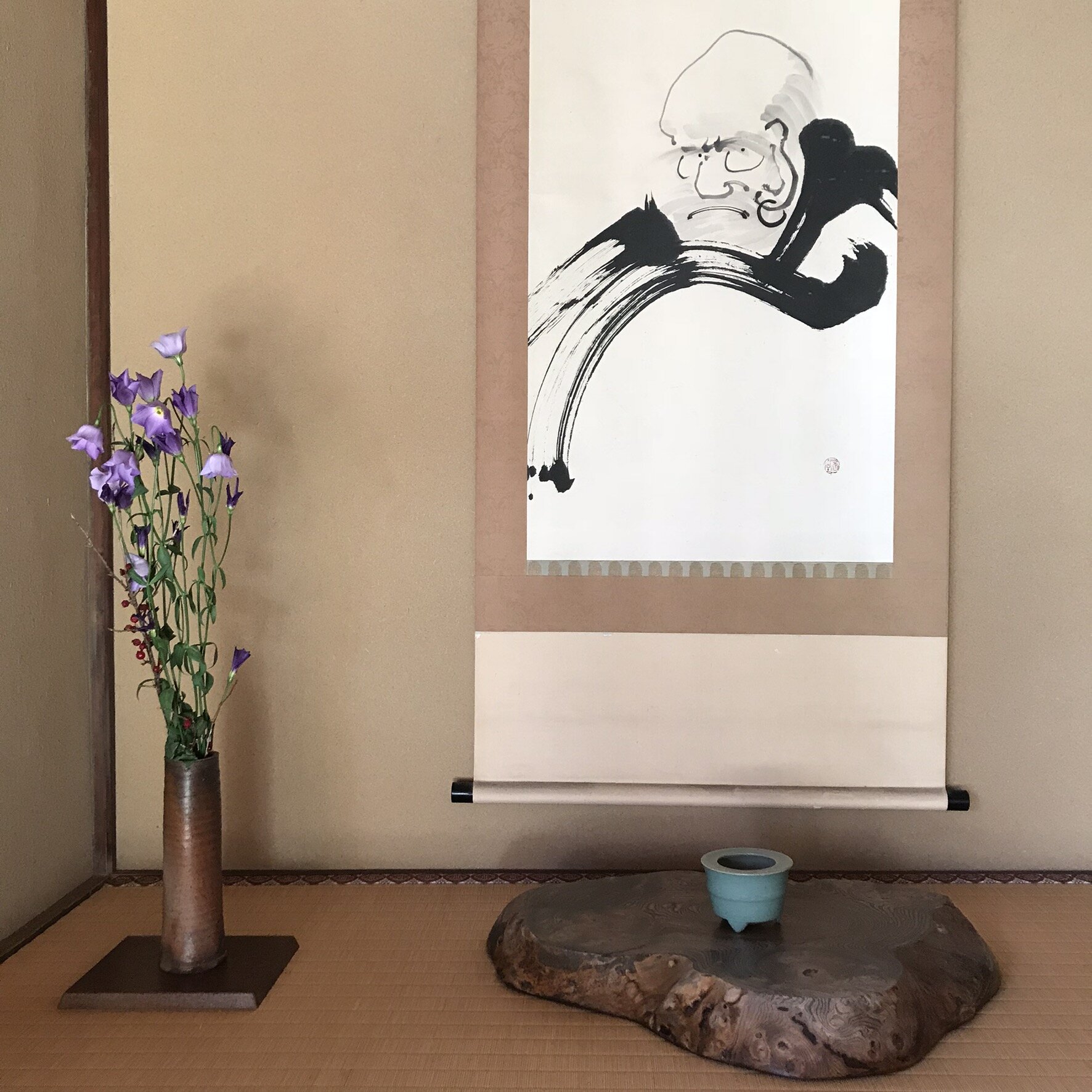Lessons from Kyoto's ancient zen gardens,
with Andrew William
by Simone Nabholz
February 2020
My first visit to a zen garden in Kyoto, I was expecting to find a cushion to sit on. To settle in and gaze over the landscape and ponder the meaning of life. I figured that’s what the monks made the gardens for, to sit and enjoy them.
My guide, in his kind way explained that monks wouldn’t do that, actually it’s tending to the gardens that is a practice in mediation. Picking up fallen leaves, raking stones, pruning trees. There is meditation in movement.
“In activity there should be calmness, and in calmness there should be activity. Calmness and activity are not different.”
It was just one of the many gems of wisdom Andrew gave me that day. I collected all the little stories he shared like precious gemstones tucked into my pocket to keep for later. Every now and then I pull one out of my memory, I turn it over in my mind and marvel at it.
Originally from the Washington D.C area Andrew has called Japan home for the last 10 years. He lives in Kyoto with his wife and two beautiful young kids. Before coming to Japan he was a professional garden designer. I first met Andrew in 2018 when I booked that walking tour. A natural storyteller, he bridges the language and cultural barriers that foreigners face when visiting Japan. He gave me an insight into the philosophies of zen gardens that I would never have had access to without him.
I wanted to continue our conversation so that you could learn more about Japan too, I asked Andrew if he wouldn't mind chatting with me for my blog.
How did you get to be doing what you’re doing?
Throughout my time doing garden design I was always very interested in Eastern philosophy and Japanese gardens, and so I came here 10 years ago to find a position in a traditional Japanese garden company. I came directly to Kyoto, as this is really the Japanese garden capital of the world. I was able to find my way into one of the highest ranking companies in Kyoto. While apprenticing in the company I also graduated from a one year Japanese gardener training program that is taught by many of the garden masters here in this town. Since having this amazing and very surreal experience I have started my own small business called An Design. I offer services in garden design and maintenance as well as leading walking tours of many of the historic gardens, temples, and shrines in Kyoto and the surrounding area.
For someone who hasn’t visited Japan before, can you tell us what is it that makes the zen gardens in Kyoto so unique?
Well, this is very difficult to explain in words, it is much better to inhabit such a space and experience it for yourself, because really – how do you explain a feeling? This is what I can say.
The gardens that one inhabits as they walk the grounds of a Zen temple in Kyoto are typically at least 400+ years old, if not much much older. Immediately that sense of antiquity is something that usually is not felt in one's day to day life.
Then, when you are visiting the grounds of a Zen temple, you are walking through an institution which for hundreds of years has been leading it's students (the monks) on the path towards enlightenment – the realisation of one's true nature and the connection one has to all beings in the universe. So these spaces are in effect – areas in which Buddha's are grown.
You can feel that everything that makes up the space – the architecture, paintings, statuary, gardens – the complete manufactured environment as a whole is in effect created to assist the monks towards Buddhahood.
So, for me this kind of environment is very unique – I don't know any other type of place with such design intentions.
On my first visit to the gardens with you, I was struck by the realisation that they’re designed to be living, evolving spaces, layered with meaning. Not just the placement of the plants but the timing of when they bloom. Can you tell us more about that?
Yes, the garden is always arranged so there is interest throughout the year. In the end of winter there are plum blossoms, early spring – cherry blossoms, then, rhododendrons, followed by azaleas, and once we reach the beginning summer rainy season we have hydrangeas in bloom.
Once the really hot season is upon us most of the garden is green, and it is the water lilies and lotuses that add the accent colour to the garden spaces.
Coming to autumn there are the changing colours of the leaves, and once we get to the winter some of the trees go bare, the understory is commonly thinned out and the garden is in its most striped down, basic state. It is actually in this season that the garden masters say it is the visit time to visit the garden if you really want to see the structure and layout of the garden in its clearest form.
It should be mentioned though, a majority of the plants in the Japanese gardens are evergreen, so the garden is still in fact very green and dynamic during the winter, it is just in this season there seems to be a certain crispness that you don't find in the other seasons.
But also as you mentioned, certain plants have deep symbolisms associated with them. The pine tree, as it always looks more or less the same and lives very long – represents stability, strength and ultimately – the eternal nature of the universe.
The plum is quite the opposite. The flowers bloom and then fall away over the course of two weeks or less, so it represents the very ephemeral nature of life.
The cherry blossoms bloom during the beginning of the spring growing season (and Japan is historically very deeply an agricultural society), so they represent new beginnings, new life.
The lilies and lotuses have their roots in the bottom of the bottom of the pond, the very dark, murky dirty area, and from here up rises the plant and out grows a very beautiful flower. This symbolises how people live in the murky human realm, and by following the way of the Buddha grow up into a very beautiful existence.
I noticed in Japan there is a reverence for the change in the seasons, the festivals and celebrations around sakura season come to mind and the changing colours of the leaves in autumn. Tell me more about how the seasons are honoured in Japan, and how important do you think it is for us to honour the seasons we’re in?
This is actually one of my favorite parts about living in Japan. There is a deep reverence for the changing seasons (and the seasons themselves) and this really does go back to historically the strong agricultural nature of Japanese society.
In every season there are certain foods, clothes, customs, alterations made to one's living space, and of course the festivals that take place.
Spring – cherry blossom viewing gatherings, planting of the new rice, summer – children's festivals and local shrine festivals to commemorate the shinto deities, autumn – celebrations for the harvesting of the rice and the viewing of autumn leaves.
This is one of my favourites. On the night of the harvest moon people gather to view the largest moon of the year. Very often gatherings take place nearby ponds where the moon can be viewed not by looking up but by looking at it's reflection in the water. This is accompanied with of course a wonderful traditional Japanese confectionery called "tsukimi dango" which is made up of mochi and red bean paste.
In winter there is the very important New Year's celebration when everyone spends time with their family ... and also together does a very intensive house cleaning!
I was taken by the sense of harmony that permeates daily life in Japan. The quietness and consideration for others in public spaces and trains and even small gestures to make life flow better. A small example I saw is when shoes are removed they’re often turned to be facing outward to the door, so it’s more graceful motion to put your shoes back on and go, it’s a little thing but it’s thoughtful. Can you talk to me about why you think this sense of harmony exists in Japan?
Oh yes, the pointing of the shoes outward, the folding of toilet paper on a roll to appear in a triangular point, the way people hold a tiny tea cup with two hands when it clearly only requires one … these are little aesthetic practices in everyday life that most people in the world never consider doing.
Even wearing masks in public (which began long before Covid) are ways that people think about themselves in relation to others. Whether these acts are done out of respect or for aesthetic enhancement, they show respect for those around them, which ultimately works towards keeping the overall harmony in ones life.
Keeping harmony within the group is the common theme which dominates all situations one finds themselves as they live in Japanese society. Whether it is in your family, in the classroom, in the office, in a restaurant, on the streets, on the train – wherever and whenever.
Whereas where I grew up in the States the theme of one's existence is to always be bold, and unique, and loud and original, the idea is 180 degrees opposite here. Why this is I can not definitively say – but through my experience and research I believe there are several factors to why this sense of keeping the harmony exists.
The first is the religious makeup of Japan. Japan has two belief systems and for the most part people observe both throughout their lives. One is Buddhism – which stresses letting go of the concept of the "I" and seeing one's existence as interdependent and interconnected with all beings. In such a context one's life can focus not of the wanting and attachment but on compassion and kindness.
The second belief system is Shintoism – which stresses respecting and showing deep reverence for the millions of spirits that exist all around us in nature. If there is harmony with the spirits in nature, this will lead to harmony within our lives. Also keeping the harmony with others in society is very much a Shintoist practice. This is how it has been since Japan came into existence, over 1,500 years ago.
Lastly, the strict class system dominated by the samurai must be mentioned in such a conversation. Until the 1870's society was separated very definitively into classes and one always knew one's place in society. It was virtually impossible to get out of one's class and obtain status in a higher class. It was the samurai who imposed the order in society. Even such a small offence as looking out of a second floor window down onto a samurai walking in the street could result in one being beheaded. The idea was that a person of a lower class should never be looking down on a person of the higher samurai class. This is an extreme example, but you can see how the idea of offending someone was avoided at all costs.
And that is how it remains today. As you mentioned on the buses or trains, or anywhere in public, it seems to be one's duty to avoid the situation of negatively impacting another person in any conceivable way possible. It might sound strange but it is one of my favorite aspects about living here.
The idea of slow living to me means figuring out what matters most and weeding out all the unnecessary things that don’t add any meaning or value to my life. It’s switching out of autopilot and living more intentionally. Do you think we can learn anything about slow living from experiencing the gardens and temples in Kyoto?
Yes, I believe you can learn Everything about what matters most and slow-living from experiencing the gardens and temples in Kyoto. Again, it is something I think everyone has to experience for themselves, but this is something I sometimes mention when I am walking through the gardens with my guests.
There is an old way of looking at nature in Japan that goes like this ... there are not only 4 seasons in Japan – there are actually 72. Every season can be broken down into 18 sub-seasons. When you do the math you can start to see that every 5 days or so something new is happening in the garden. A cycle is beginning. A cycle is ending.
This way of viewing nature evolved out of Japan's deep agricultural roots when around 80% of the people were farmers. There was constant attention being paid to the crops – which seeds needed to be planted, which plants need to be trimmed, which plants were ready to be harvested, etc.
There was literally constant attention being paid towards nature. Fast forward hundreds of years and we are not farmers and hardly pay close attention to nature, except when we are checking the forecast to see what clothes we should wear the next day or how to plan our weekends.
As we spend time in the gardens we can see the slight changes from the days before. We can remember back to years past and consider what changes will be coming.
We can realise that our existence is much like the plants we see in the gardens. We can ease the attachment we have to the image of ourselves as some constant well-polished being that needs to be perpetually maintained-because we can realise we don't even exist in that form at all.
We are always changing beings that exist in birth/death cycles. When you can see this played out in nature it can tell you a lot about your own existence. We as humans are not separate from nature, we are nature.
There are many stories and poems that can give us insights into zen philosophies, do you have a favourite story or poem you could share with us, and tell us why you like it?
A poem I like:
An old pond
A frog jumps in –
Water sound!
I really can't tell you why I like that haiku. But maybe you just felt the same feeling as I do when you read those words. That's why I like it.
A short story I like:
When Banzan was walking through a market he overheard a conversation between a butcher and his customer. “Give me the best piece of meat you have,” said the customer.
“Everything in my shop is the best,” replied the butcher. “You cannot find here any piece of meat that is not the best.” At these words Banzan became enlightened.
This story (koan) really does illustrate the core of Zen. Zen concerns itself with the absolute, not relative values. Each individual thing is the best in the whole world because it is the only one of that thing. The only obligation one has in life is to bring out one's best.
You live in a small house, 40 square metres, with your wife and two children. Are there any advantages to living in a small space, how do you think it informs the way you live?
Yes! Absolutely the four of us living in a tiny apartment definitely altered the way we live, but I must confess we have since moved and now live in a very slender two story house. As the Covid-19 pandemic intensified I foresaw that all my work was moving online. There was no way to do this work in such a tight space with the kids around, so we moved to this house which we found nearby and our kids can still go to their same school.
Living in a small space really only informs one way you live – but that way really affects many of the other aspects in one's life. And that is – when you live in a tight space you end up buying a lot less things.
We try to keep as much open space as possible to maximise how our space can be used, so basically whenever we purchase something we typically get rid of something. So if we were ever in a store considering purchasing something, we first strongly consider 1) do we really need this thing?, and 2) what of the things we own is worth giving up to take in this new thing?
After a while we started realising we don't really need anything – just when the things we have break, we have to replace them. And so then we stopped going to stores and asking ourselves – do we need to buy this thing?
From this habit evolving, it is easy to get away from the idea that anything we will ever buy will bring us happiness. Because if you go about happiness in such a way you will be always looking to make that next purchase and the cycle is never ending.
Then you need a bigger space to put all your stuff and you have to make more money to afford the bigger space then you have less time because you are always working and can't enjoy any of it anyway.
So, if you just have a small, mostly empty/adaptable space and have good relationships with the people around you and develop hobbies and make your work meaningful and enjoy it – those are the best things to have!
If I had 24 hours in Kyoto, where would the must-visit places be? Whether it be food, gardens, museums etc … and what is it about them that makes them in your top list?
Oh boy...well I would never recommend one puts themselves in the situation of only being here for 24 hours ... I have been here for 10+ years and haven't experienced all things I would like to in this town!
And I could probably answer this question in 20 different ways depending on the mood I am in at the moment ... but the way I will answer this question now is to recommend the exact walk that we did with your family when you were last here – which is on the west side of town, from the foothills of the mountains in Saga down into the town of Arashiyama.
This is a walking tour I often lead my guests on and it is a full day of eclectic sites, traditional shops and good food. We start off visiting a temple with 1,200 stone statues representing the disciples of the Buddha, then visit an ancient burial ground that has deep connections to the local community.
We have an early tea and sweets break at a 400 year-old cafe, and then continue to a small temple founded by two ex-geisha that is home to a lovely moss garden secluded in the forest.
Next, we check out several shops which specialise in bamboo goods, pottery and paper and have a simple traditional lunch. After lunch we continue to a small hut with links to a well-known Haiku master from the Edo period, and then on to a bamboo forest where on the edge of the forest we visit the sprawling estate of an ex-silent film actor.
Afterwards we head to one of the first Zen temples in Japan that is home to what is considered the first Zen garden ever. Finally we end up down by the river at the famous bridge, one of the iconic views in Kyoto. It is a full day and by the end we are all pretty beat, but it is a very uplifting experience and well-worth the effort.
You can find Simone and her wonderful pottery on Instagram @winterwares or at winterwares.com.au

